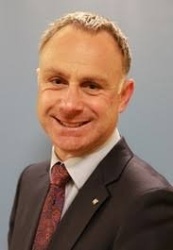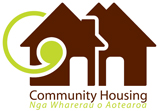Launch Of Youth Suicide Prevention Help Card
Hon Laila Harre Speech Notes
Launch Of Youth Suicide
Prevention Help Card
Harbour Light Theatre
24 London
St
Lyttleton
Christchurch
Good morning, and thank you for the invitation to be part of an initiative that tackles head-on one of the worst symptoms of the breakdown in healthy youth development.
Christchurch is proving to be a very important place to me as Minister of Youth Affairs. I've made a few trips here over the course of the year, and each time I have left feeling inspired and truly impressed by the leadership this community devotes to improving outcomes for young people.
The Christchurch Youth Workers Collective is a model I urge other regions to aspire to, as are your youth health services. Today it gives me great pleasure to launch another initiative that I will be able to use as an example around the country when discussing with communities practical and positive ideas for youth suicide prevention.
I would like to start by acknowledging the role of Canterbury Project MANA in the development of the help card. Your approach recognises that communities themselves are in the best position to develop the short-term strategies to promote youth suicide prevention. Credit should also go the Banks Peninsula District Council for supporting and extending the overall aims of Project MANA.
I believe that partnership and collaboration is the key to dealing with New Zealand's appalling youth suicide statistics. This is not a problem that just affects young people – the effects of youth suicide are far-reaching and devastating, and we all have a role to play. This will only happen if there is collaboration between young people themselves, community leaders and agencies, health providers and central and local government.
This sounds simple in practice, but in my experience not all communities are as aligned on how best to deal with youth suicide prevention as you are here in Christchurch. Unfortunately, like Christchurch, many regions have suffered a similar level of loss. In Canterbury during 1997 there were 85 suicides, 20 of which were in the 15-24 age group. Seventeen of the 20 were young men.
In one town I recently visited there was a strong message from young people themselves that they wanted to talk openly and honestly about the issue, but it was the community leaders themselves that didn't feel confident or supported enough to let this happen. A desire to tackle youth suicide wasn't lacking – what was missing was a clear, co-ordinated plan and collective vision about how to protect the young people and adults who wanted to take this task on board.
One of the most important things about this Help Card is that it aims to support young people seeking help. It links in with other positive youth development models, such as the Health Promoting Schools programme to create education and training opportunities at all levels. This will ensure the wider community has the support it needs to play an effective role in youth suicide prevention.
It will also have the much-needed back up of support networks, including an 0800 Project MANA number, links with Youthline and the Suicide Prevention Information New Zealand website.
Lyttleton has been selected for the initial launch because it is a small community that has a demographic make-up reflective of New Zealand's wider population. The idea here is that from little things big things grow, and the Help Card programme will eventually extend to the wider Canterbury region.
Resources like the Help Card campaign and the recently launched SPINZ community prevention kit are a key part of youth suicide prevention, but not the only part.
As set out in the government's Youth Suicide Prevention Strategy, youth suicide must be dealt with at two levels.
Community resources like this fall into the first category, and ensure that when a young person has become at risk that the services and people are in place to identify this risk and know what to do about it.
The second level is about prevention through community development. This is about putting systems in place that focus on building healthy, happy young people that have the resiliency to bounce back from life's challenges.
This will be a focus of the Youth Development Strategy Aotearoa, which the Ministry of Youth Affairs is in the process of putting together. This strategy won't try to eliminate all the challenges that will confront our young people. Rather it will aim to advise on the ways that communities can protect and support young people to cope with crises when and if they arise.
These two levels must be woven together in partnership, just as communities and central government must meld if we are to improve outcomes for our young people.
I sincerely thank you for the leadership role you are playing in making this happen.
Ends


 Gordon Campbell: On ACT’s Charter Schools Experiment
Gordon Campbell: On ACT’s Charter Schools Experiment Unions Wellington: Poll Shows Three Quarters Of Wellingtonians Oppose Airport Sale
Unions Wellington: Poll Shows Three Quarters Of Wellingtonians Oppose Airport Sale NZ Government: Christopher Luxon - Pre-Budget Speech To Auckland Business Chamber
NZ Government: Christopher Luxon - Pre-Budget Speech To Auckland Business Chamber Government: New Zealand Supports UN Palestine Resolution
Government: New Zealand Supports UN Palestine Resolution Green Party: Greens Welcome Cross-party Approach To Climate Adaptation
Green Party: Greens Welcome Cross-party Approach To Climate Adaptation Government: Climate Change – Mitigating The Risks And Costs
Government: Climate Change – Mitigating The Risks And Costs Greenpeace: Protest March Against Fast-track Bill Announced For Auckland
Greenpeace: Protest March Against Fast-track Bill Announced For Auckland


